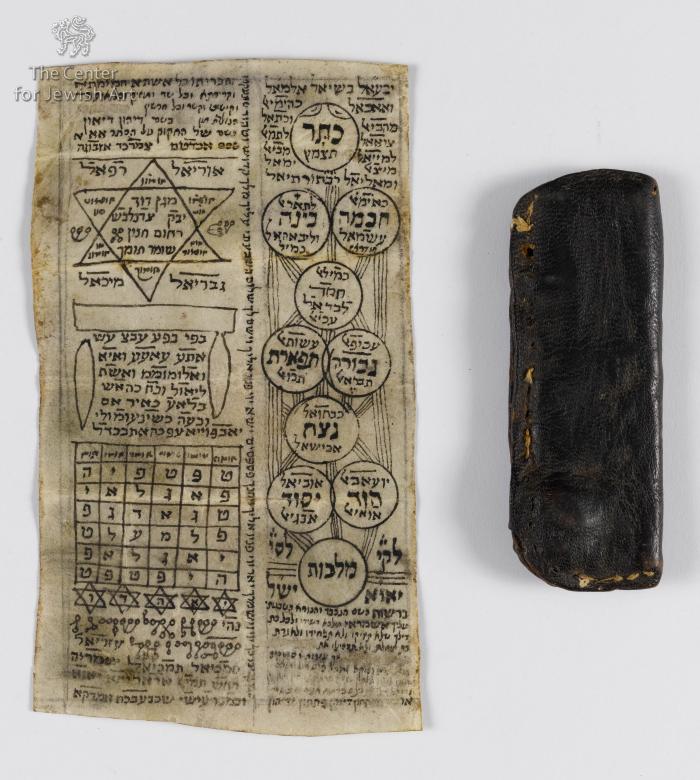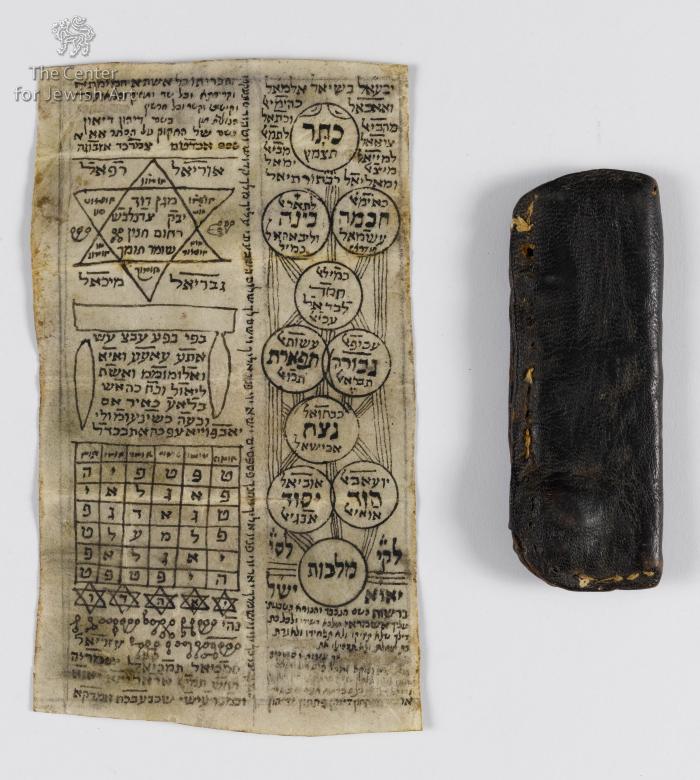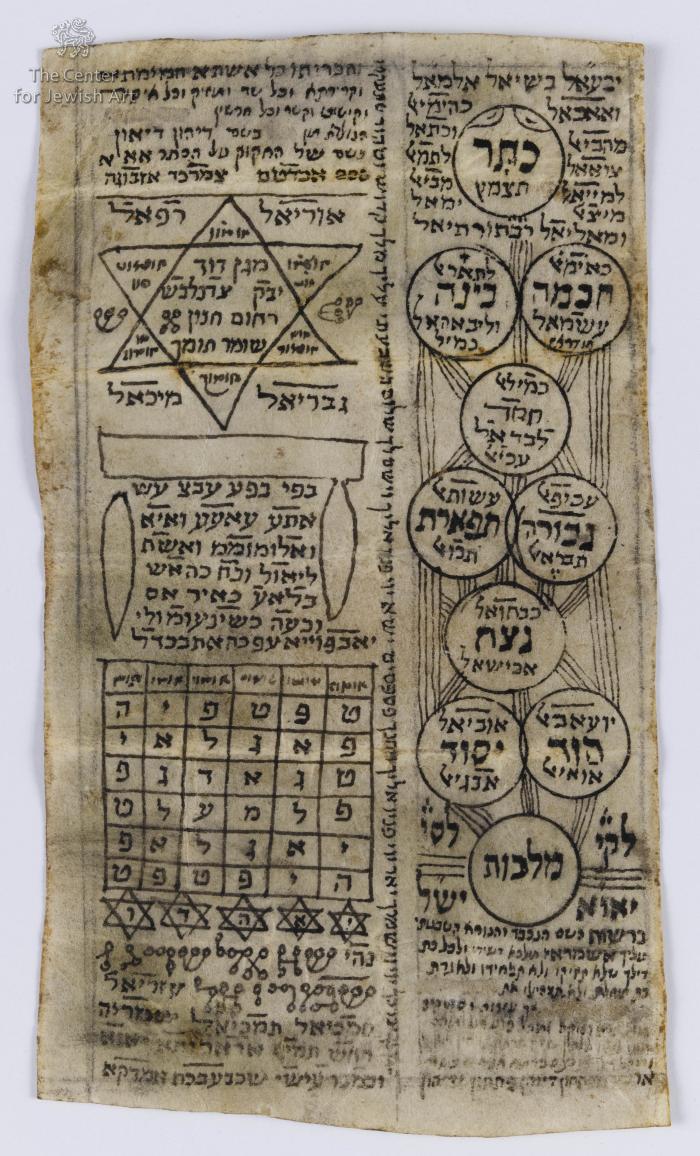Obj. ID: 51445 Amulet, Israel/Eretz Israel, circa 1900

sub-set tree:
M | Magen David
A | Amuletic diagram
K | Kabbalistic diagram | Sefirot Tree
|
The following description was prepared by William Gross:
In the culture of the Jews of the east, it was a custom to fold the written amulet and sew it shut in a pouch of cloth or leather, as in the present example. Besides the use of many of the names of angels for protection, this amulet uses the devices of the Magen David, angel writing, the large letter "heh", the monogrammaton, and a constructed magic square of formulaic letters that represent three different "names". But the most unusual feature, little seen on amulets, is the use of the Kabbalistic Sephirot on the right side of the amulet, with the name of an angel linked to each one of the ten. The name of the person, a woman, for whom the amulet was written, has been erased and the amulet was apparently put back into use for whoever carried it. The creases from the folding of the amulet to put it in the small leather case in which it was found are still clearly visible.




